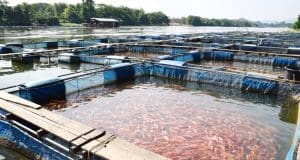
Imagine a world where we can grow fish and seafood in a way that’s good for the environment and helps us have delicious meals on our plates. Well, that’s what we’ll be exploring in this exciting journey called “Slide Towards Success: Best Practices in Aquaculture.”
Aquaculture is like a big underwater farm where fish and seafood are raised with special care. But not just any care – we’re talking about the very best ways to do it! These “best practices” are like secret recipes for making sure fish and seafood grow healthy and strong, all while being friendly to our planet.
Contents
What Are the Fascinating Best Aquaculture Practices?🐟
When we talk about best aquaculture practices, we’re really diving into something amazing! But, you might be wondering, “What in the underwater world are these practices?” Well, let’s explore this exciting underwater adventure and learn all about them.
Defining Best Aquaculture Practices
Imagine you have a magical recipe book for taking care of fish and seafood. That recipe book is what we call best aquaculture practices. These are like super instructions that show fish farmers the right way to grow fish and seafood.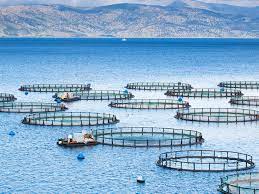
It’s not just about feeding them and hoping for the best. It’s about giving them the perfect home, the right food, and making sure they’re healthy and happy. Think of it as a superhero guide for underwater farming!
Why Are They So Important in Aquaculture?
Now, you might be wondering, “Why do we even need these super instructions?” Well, here’s the deal: Our oceans are like big, underwater neighborhoods where many creatures live, including the fish we like to eat.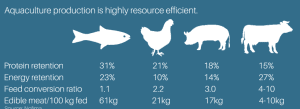
Best aquaculture practices are like good manners for farmers. They make sure that when we raise fish and seafood, we do it in a way that’s friendly to the environment. That means we don’t harm the ocean or other creatures that live there.
Exploring the Marvels of Best Aquaculture Practices🐟
Now that we know what best aquaculture practices are, it’s time to explore why they’re so incredible! Imagine these practices as the magical keys to a treasure chest full of benefits for our underwater world.
Unveiling Environmental and Economic Benefits
Underwater life is like a hidden gem, and these practices help us protect it. When we use best aquaculture practices, we make sure our fish and seafood are raised in a way that doesn’t harm the ocean and its inhabitants.
Imagine if you had a special way to clean your room that made your toys happy instead of making a mess. That’s what these practices do for the ocean – they keep it clean and healthy, just like a sparkling underwater playground!
Diving into Successful Examples
Let’s take a peek at some real-life stories of people who have used best aquaculture practices to create underwater success stories. Imagine a shrimp farm that follows these practices closely. They take care of their shrimp like they’re family, making sure they have enough space to swim and enjoy their underwater world.
These happy shrimp grow big and tasty, and people love them. Plus, because the farm uses best aquaculture practices, they earn a special label that tells everyone, “Hey, we’re doing things the right way!” This label is like a gold star for being awesome at taking care of our underwater friends.
Exploring Sustainable Practices in Fish Farming🐟
Now that we’ve delved into the world of best aquaculture practices, let’s dive even deeper to understand how these practices are making a splash in the fish farming world!
Understanding Sustainable Fish Farming
Imagine a giant fish playground, and the fish are like the cool kids who live there. Marine environments, like oceans and seas, are where they call home. Now, when we talk about sustainable fish farming, we’re talking about taking care of these fish while keeping their playground super clean and healthy.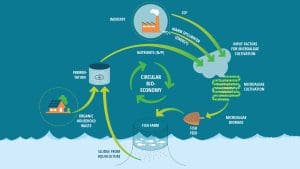
Fish farmers who use best aquaculture practices are like the lifeguards of the fish playground. They make sure the fish have enough space to swim and play, clean water to breathe in, and yummy food to eat. It’s like a fish paradise where everyone’s happy!
Innovative Techniques That Wow
Have you ever heard of a fish farm where fish swim around in circles all day? It might sound a bit funny, but it’s an innovative technique called “circular fish farming,” and it’s one of the cool things people do to raise fish.
Another awesome technique is “aquaponics.” It’s like a teamwork game where fish and plants help each other grow. The fish provide nutrients for the plants, and the plants clean the water for the fish. It’s a win-win for everyone!
When we talk about best aquaculture practices, we mean these kinds of smart and creative ways to raise fish while taking care of our underwater world.
Discovering the Best in Fish Farming
Now, you might be wondering, “Who has the best aquaculture practices?” Well, there’s a special symbol called the “Global Aquaculture Alliance Best Practices Symbol” that tells you which fish farms are doing things the right way. When you see this symbol, you know you’re getting fish that were raised with lots of love and care.
So, in a nutshell, sustainable fish farming is all about creating a happy and healthy home for fish while using cool and innovative techniques. It’s like a big underwater party where everyone’s invited, and it’s good for the fish, the farmers, and our planet.
Environmental Management and Sustainability🐟
Now that we’ve explored the wonders of best aquaculture practices (BAP) in fish farming, it’s time to dive into another important part of this underwater adventure: Environmental Management and Sustainability. Let’s learn how these practices help keep our oceans clean and healthy!
Reducing Environmental Impact with BAP Standards
Imagine if you had a superpower that could make your room magically clean without using lots of water or making a mess. Well, best aquaculture practices standards are a bit like that superpower for fish farming. They help fish farmers do their job while being super kind to the environment.
When we talk about reducing environmental impact, we mean doing things in a way that doesn’t harm the ocean, the plants, or the other animals living there. BAP standards make sure that fish farms use just the right amount of water, food, and space so that everyone in the underwater neighborhood can live happily ever after.
Certified Sustainability Programs.
Have you ever seen a green stamp on a product that says, “This is eco-friendly!”? Well, fish farms can get a similar green stamp through certification programs. These programs check if a fish farm is following all the right rules to be kind to the environment.
One example is the Best Aquaculture Practices (BAP) certification. When you see this label on seafood products, it’s like a green flag that says, “This seafood is good for the environment!” It means the fish and seafood were raised with lots of care for our underwater world.
Our Role in Protecting the Ocean
Remember, we’re all superheroes when it comes to protecting our planet. By choosing seafood with the BAP label and supporting best aquaculture practices, we’re like Earth’s guardians, making sure the underwater world stays beautiful for generations to come.
In this underwater journey, we’ve learned how best aquaculture practices not only create delicious seafood but also help protect our oceans and their amazing creatures. It’s like a win-win for everyone, and together, we can make a big splash in keeping our planet blue and green!
Challenges and How to Overcome Them🐟
Our journey through the world of best aquaculture practices has been exciting so far, but it’s important to know that there can be obstacles along the way. In this part of our adventure, we’ll explore some common challenges that people face when trying to use these practices and discover strategies to overcome them.
Identifying Common Challenges
Imagine you’re on a treasure hunt, and along the way, you encounter tricky puzzles and hidden traps. Well, implementing best aquaculture practices can sometimes feel like that. Here are a few challenges people often face:
Cost Concerns: Some of these practices can be a bit more expensive initially, and not all fish farmers have the extra money to invest.
Learning Curve: Learning how to use these practices effectively can take time and effort, like mastering a new video game.
Changing Habits: Fish farmers might be used to doing things a certain way, so switching to new practices can be like changing your favorite game for a new one.
Strategies for Overcoming Obstacles
Now, let’s put on our problem-solving hats and discover how to overcome these challenges:
- Financial Help: There are organizations and programs that can provide financial support to fish farmers who want to implement best aquaculture practices. It’s like getting extra coins in your game!
- Education and Training: Learning something new can be fun, especially when you have the right tools. Fish farmers can take courses and get training to become masters of these practices.
- Taking Small Steps: Change doesn’t have to happen all at once. Fish farmers can start by trying out one or two practices and gradually add more over time. It’s like leveling up in a game – one step at a time!
Our Role in Supporting Change
Just like superheroes who help each other out, we can also play a part in supporting fish farmers as they face these challenges. When we choose seafood products that follow best aquaculture practices, we’re sending a message that we support their efforts to protect the environment and provide us with delicious seafood.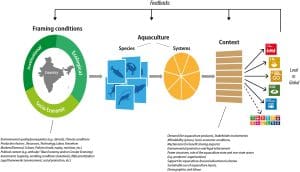
In this part of our journey, we’ve seen that while there may be obstacles, there are also solutions. Fish farmers are working hard to make sure we have tasty seafood and a healthy ocean. By being aware of these challenges and supporting sustainable practices, we can be heroes for our underwater world too!
Real Success Stories in Aquaculture🐟
In our underwater adventure through the world of best aquaculture practices, we’ve learned a lot about how these practices benefit our oceans and the fish we love. Now, let’s dive into some real-life stories that showcase how fish farms have used these practices to create amazing success.
Farm #1: The Shrimp Sanctuary
Imagine a shrimp farm where shrimps are living like kings and queens. Well, this is the story of one such farm. They adopted best aquaculture practices and created a shrimp sanctuary.
- Clean Water Magic: They made sure the water was super clean and fresh for the shrimps. It’s like giving them a fancy spa day every day!
- Perfect Space: The shrimps had lots of room to swim around, just like a giant swimming pool. Happy shrimps make delicious shrimps!
- Healthy Diet: The farm served the shrimps a special diet, making them grow big and tasty, ready to be enjoyed by seafood lovers.

This farm earned the Best Aquaculture Practices (BAP) certification, and people from all around knew they were getting the tastiest and most sustainable shrimp.
Farm #2: The Eco-friendly Trout Farm
Next, let’s explore the story of an eco-friendly trout farm. They wanted to raise trout while being super kind to the environment, and they did it!
- Recycling Magic: They used the water from a nearby river and carefully cleaned it before giving it to the trout. It’s like giving the river a big hug.
- Sun-Powered Farm: They used solar panels to power their farm. It’s like using sunshine to make their fish farm super cool!
- Happy Trout, Happy People: The trout at this farm were not only healthy but also tasted amazing. People loved them.

This farm showed that with best aquaculture practices, you can have delicious seafood without harming the environment.


